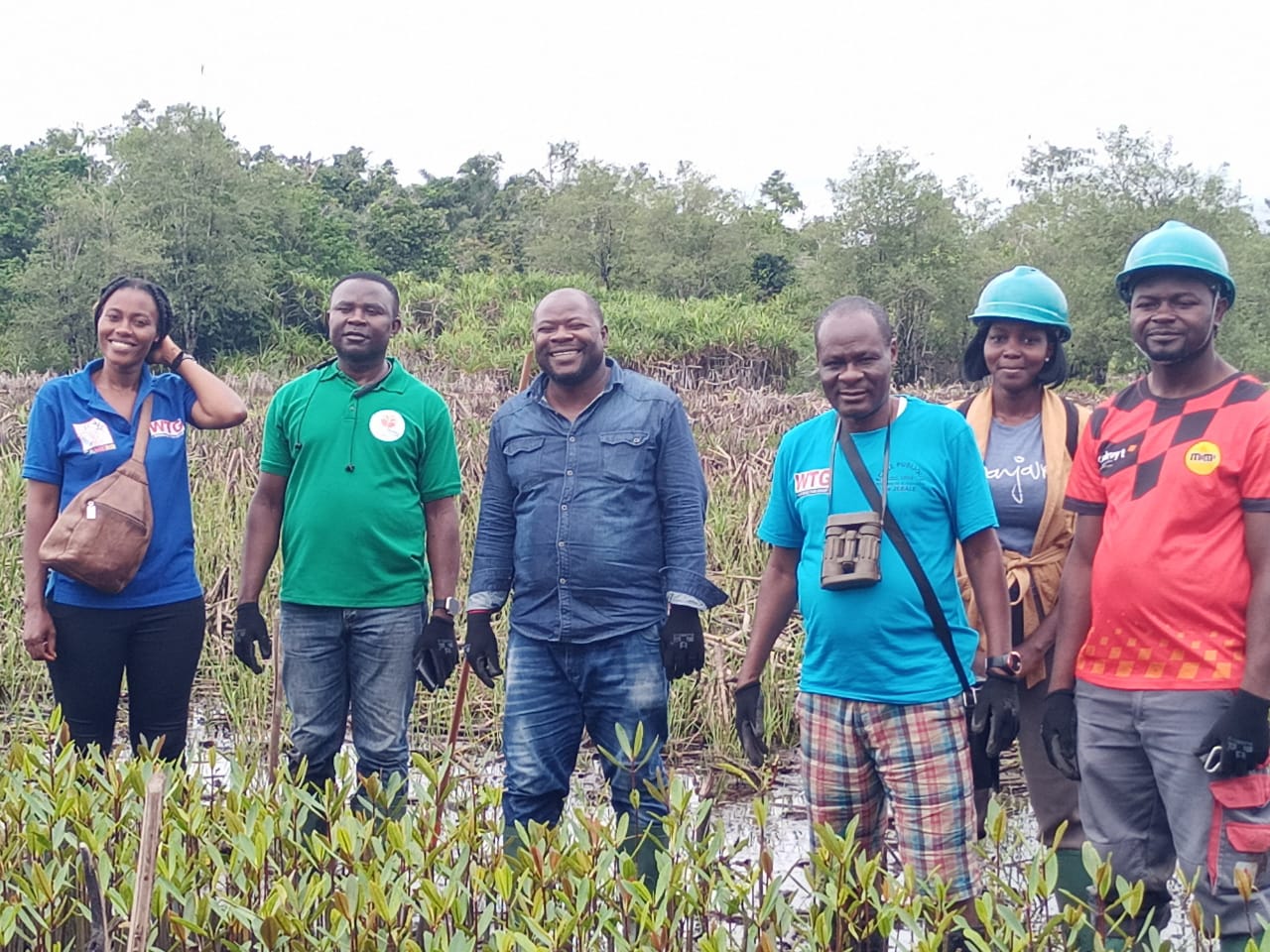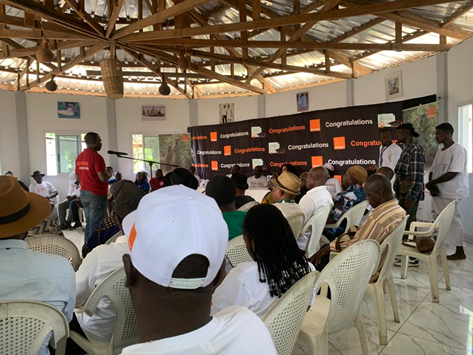Projet CAMERR – Cameroun
The Wouri estuary (Douala region) is now seeing its mangrove ecosystems severely degraded: 70,000 ha of mangrove forests were said to have been decimated in Cameroon between 1980 and 2006. This is due to population pressure, urbanization, fish processing,

Cameroun Mangrove Ecosystem Restoration and Resilience PROJET EN DEPLOIEMENT
The Wouri estuary in the Douala region of Cameroon is home to extensive mangrove ecosystems, which are now facing severe degradation. The once-thriving mangrove forests have been decimated over the years, with an estimated 70,000 hectares lost between 1980 and 2006. This degradation has been attributed to a variety of factors including population pressure, urbanization, fish processing, sand extraction, and insufficiently coordinated policies and economic development programs for the coastal zone.
Plant nursery
The loss of mangrove forests in the Wouri estuary has had detrimental effects on both the biodiversity that populates this ecosystem and on the activities of riparian populations. The decline in mangroves has led to dwindling fish populations due to habitat loss and disrupted breeding grounds. Additionally, without the natural protection provided by healthy mangrove ecosystems, communities in the area are more vulnerable to flooding and other extreme weather events. The loss of this crucial natural barrier also contributes to an increase in temperatures as well as coastal erosion.
In response to these pressing issues, there is a growing effort towards restoration and sustainable management of the remaining mangrove forests in the area. One ambitious objective is centered around restoring 1,000 hectares of mangroves with a dual focus: protecting biodiversity while also strengthening community resilience.
One key aspect of this restoration effort involves addressing some of the root causes that have led to degradation. By implementing sustainable management practices such as controlled harvesting techniques for resources like wood and fish within these habitats can help prevent further destruction.
Furthermore, efficient land-use planning can help mitigate encroachment into these sensitive areas by urban development or industrial activities like sand extraction or mining that have contributed significantly towards habitat destruction
Consultation meeting with Orange and Community Leaders
In addition to conservation efforts aimed at protecting biodiversity within these mangrove ecosystems, there is also a focus on supporting the socio-economic autonomy of riparian communities. This includes the implementation of income-generating activities that are in harmony with the restoration and sustainable management of the mangroves.
One such activity is eco-tourism, which can provide local communities with alternative sources of income while also raising awareness about the importance of preserving these vital ecosystems. Other potential income-generating activities could include sustainable aquaculture and agroforestry initiatives that work in tandem with mangrove conservation efforts. By providing alternative livelihood options, it becomes possible to reduce dependency on activities that harm mangrove ecosystems.
The restoration and sustainable management of mangrove forests in the Wouri estuary not only serves to protect biodiversity but also plays a crucial role in ensuring community resilience against environmental challenges. The natural protection provided by healthy mangroves is essential for mitigating coastal erosion, flooding, and extreme weather events – all of which are becoming increasingly prevalent due to climate change.
Moreover, by taking steps towards protecting and restoring these vital ecosystems, Cameroon is working towards fulfilling its commitments under international agreements such as the Convention on Biological Diversity (CBD) and Sustainable Development Goals (SDGs).
The degradation of mangrove forests in the Wouri estuary has far-reaching ecological, social, and economic consequences. Therefore, it's imperative to prioritize conservation efforts aimed at restoring these critical habitats while simultaneously supporting local communities who depend on them for their livelihoods.
WTG team with CAMERR Delegates ready to visit planting site
By implementing measures for sustainable management along with income-generating activities that align with conservation objectives, it's possible to ensure long-term benefits for both biodiversity and human populations in this ecologically important region. The success of these efforts will not only have immediate positive impacts but will contribute significantly towards building a more resilient future for both nature and people alike.
Objectives
The restoration and sustainable management of 1,000 hectares of mangrove forests aims to protect biodiversity and strengthen the resilience of communities in the area. Income-generating activities will strengthen the socio-economic autonomy of these communities
Implementing partner



.png)
.png)
